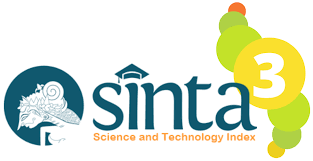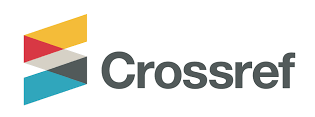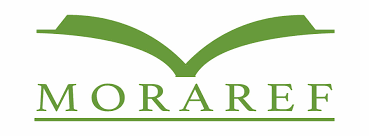Pendanaan Alternatif Berbasis Wakaf Produktif Persepektif Maqashid Syariah: Solusi Keuangan Berkelanjutan untuk Perguruan Tinggi
 Abstract views: 176
,
Abstract views: 176
,
 PDF downloads: 112
PDF downloads: 112
Abstract
Penelitian ini bertujuan untuk merancang model pengembangan wakaf produktif guna memperkuat pendanaan pendidikan sebagai solusi alternatif yang berkelanjutan untuk membantu pendanaan pendidikan di tingkat perguruan tinggi. Data penelitian dikumpulkan melalui kuesioner dan wawancara mendalam dengan responden yang memiliki pemahaman mendalam tentang wakaf dan dunia pendidikan, baik dari kalangan akademisi maupun praktisi. Metode Analytic Network Process digunakan untuk mengidentifikasi kriteria prioritas yang mempengaruhi keberhasilan pengelolaan wakaf produktif, dengan fokus pada dimensi sosial, ekonomi, dan kelembagaan. Hasil Penelitian menunjukkan bahwa pengembangan model wakaf produktif untuk pendanaan pendidikan tinggi dipengaruhi oleh elemen-elemen yang saling terkait. Tujuan utama pengembangan model ini adalah untuk mencapai kesejahteraan spiritual (0,359), Faktor dominan dalam pengembangan model ini adalah aset wakaf (0,469), dengan uang (0,408) menjadi jenis aset yang paling berpengaruh, diikuti oleh wakaf saham sebagai instrumen pembiayaan utama (0,303) serta Manfaat dari wakaf produktif meliputi profit (0,307). Lembaga yang paling potensial sebagai pengelola wakaf produktif adalah organisasi (0,304). Secara keseluruhan, wakaf uang (0,358) merupakan alternatif terbaik dalam mengoptimalkan wakaf produktif sebagai sumber pendanaan alternatif bagi pendidikan tinggi di Indonesia. Pengembangan model wakaf produktif tidak hanya bentuk aktualisasi nilai maqashid syariah, tetapi juga strategi keuangan inklusif yang dapat memperkuat kapasitas pembiayaan sektor pendidikan di Indonesia. (This study aims to design a productive waqf development model to strengthen education funding as a sustainable alternative solution to assist in funding higher education. Research data was collected through questionnaires and in-depth interviews with respondents who have a deep understanding of waqf and the world of education, both from academics and practitioners. The Analytic Network Process method will be used to identify priority criteria that influence the success of productive endowment management, with a focus on social, economic, and institutional dimensions. The research results indicate that the development of a productive endowment model for higher education funding is influenced by interrelated elements. The main objective of developing this model is to achieve spiritual well-being (0.359). The dominant factor in the development of this model is waqf assets (0.469), with cash (0.408) being the most influential type of asset, followed by waqf shares as the main financing instrument (0.303) and the benefits of productive waqf include profit (0.307). The most potential institution as a manager of productive waqf is an organization (0.304). Overall, cash waqf (0.358) is the best alternative in optimizing productive waqf as an alternative funding source for higher education in Indonesia. The development of the productive waqf model is not only a form of actualizing the values of maqashid Syariah but also an inclusive financial strategy that can strengthen the financing capacity of the education sector in Indonesia.)
Downloads
References
Allah Pitchay, Anwar, Mohamed Asmy Mohd Thas Thaker, Al Amin Mydin, Zubir Azhar, and Abdul Rais Abdul Latiff. “Cooperative-Waqf Model: A Proposal to Develop Idle Waqf Lands in Malaysia.” ISRA International Journal of Islamic Finance 10, no. 2 (2018): 225–36. https://doi.org/10.1108/IJIF-07-2017-0012.
Ascarya. “Baitul Maal Wat Tamwil (BMT) as an Integrated Islamic Social and Commercial Financial Institution in Indonesia.In ISRA-TR-IRTI (Eds.), The Islamic Commercial Law Report 2018.,” no. November (2017): pp.104-107.
Ascarya, Ascarya, Muhamad Nadratuzzaman Hosen, and Siti Rahmawati. “Designing Simple Productive Waqf Models for Indonesia.” International Journal of Ethics and Systems 38, no. 3 (2022): 380–401. https://doi.org/10.1108/IJOES-07-2020-0101.
Azizi, Majid, Fatemeh Sarfi, Mehdi Faezipour, and Amin Arian. “A Comparative Model of Kinds of Composite Wood Regarding Customers’ Perspective Using Analytic Network Process (ANP).” International Journal of Multicriteria Decision Making 4, no. 4 (2014): 367–92. https://doi.org/10.1504/IJMCDM.2014.066870.
Çizakça, Murat. “Awqaf in History and Its Implications for Modern Islamic Economies *.” Islamic Economic Studies 6, no. 1 (1998): 43–70.
Fauzi, R. M.Qudsi, Meri Indri Hapsari, Sri Herianingrum, Sunan Fanani, and Tuti Kurnia. “The Challenges of Empowering Waqf Land in Indonesia: An Analytical Network Process Analysis.” International Journal of Ethics and Systems 38, no. 3 (2022): 426–42. https://doi.org/10.1108/IJOES-03-2021-0061.
Giannakis, Mihalis, Rameshwar Dubey, Ilias Vlachos, and Yanbing Ju. “Supplier Sustainability Performance Evaluation Using the Analytic Network Process.” Journal of Cleaner Production 247 (2020): 119439. https://doi.org/10.1016/j.jclepro.2019.119439.
Haryanto, Rudy. “Abstract :,” n.d.
Idris, Ridwan. “Apbn Pendidikan Dan Mahalnya Biaya Pendidikan.” Lentera Pendidikan : Jurnal Ilmu Tarbiyah Dan Keguruan 13, no. 1 (2010): 92–110. https://doi.org/10.24252/lp.2010v13n1a7.
Indonesia, Badan Wakaf. “3. Menelisik Manfaat Potensi Wakaf Uang Untuk Bantu Kaum Dhuafa”.Pdf,” n.d.
Jedidia, Khoutem Ben, and Khouloud Guerbouj. “Effects of Zakat on the Economic Growth in Selected Islamic Countries: Empirical Evidence.” International Journal of Development Issues 20, no. 1 (2021): 126–42. https://doi.org/10.1108/IJDI-05-2020-0100.
Kuran, Timur. “Zakat: Islam’s Missed Opportunity to Limit Predatory Taxation.” Public Choice 182, no. 3–4 (2020): 395–416. https://doi.org/10.1007/s11127-019-00663-x.
Mohsin, Magda Ismail Abdel, Hisham Dafterdar, Murat Cizakca, Syed Othman Alhabshi, Shaikh Hamzah Abdul Razak, Seyed Kazem Sadr, Thamina Anwar, and Mohammed Obaidullah. “Financing the Development of Old Waqf Properties.” Financing the Development of Old Waqf Properties, 2016, 221–36. https://doi.org/10.1057/978-1-137-58128-0.
Munim, Ziaul Haque, Henrik Sornn-Friese, and Mariia Dushenko. “Identifying the Appropriate Governance Model for Green Port Management: Applying Analytic Network Process and Best-Worst Methods to Ports in the Indian Ocean Rim.” Journal of Cleaner Production 268 (2020): 122156. https://doi.org/10.1016/j.jclepro.2020.122156.
Mustofa, Imam, Dri Santoso, and Upia Rosmalinda. “The Implementation of the Regulation of Cash Waqf Management in Higher Educational Institution in Indonesia and Malaysia (a Study of Legal System Theory).” Humanities & Social Sciences Reviews 8, no. 4 (2020): 69–77. https://doi.org/10.18510/hssr.2020.848.
Nofianti, Leny, Murniati Mukhlisin, and Andi Irfan. “Cash Waqf Innovation in Islamic Financial Institutions and Its Governance Issues, Case Studies: Indonesia, Malaysia, Türkiye.” Journal of Islamic Accounting and Business Research, 2024. https://doi.org/10.1108/JIABR-12-2023-0420.
Nurbaini, Asyah, Sandra Dewi. “Journal Research and Education Studies.” Invention 1, no. 1 (2020): 33–43.
O.Nyumba, Tobias, Kerrie Wilson, Christina J. Derrick, and Nibedita Mukherjee. “The Use of Focus Group Discussion Methodology: Insights from Two Decades of Application in Conservation.” Methods in Ecology and Evolution 9, no. 1 (2018): 20–32. https://doi.org/10.1111/2041-210X.12860.
Rara’, Nopriani, and Trivena Trivena. “Biaya Pendidikan Tinggi Bagi Mahasiswa Dengan Keterbatasan Ekonomi, Seberapa Besar Dampaknya?” Jurnal Keguruan Dan Ilmu Pendidikan 10, no. 3 (2022): 51–56. https://doi.org/10.47178/jkip.v10i3.1460.
Saaty, Thomas L. “Decision Making with Dependence and Feedback: The Analytic Network Process : The Organization and Prioritization of Complexity,” 2001, 370.
Shaukat, Badiea, and Qigui Zhu. “Finance and Growth: Particular Role of Zakat to Levitate Development in Transition Economies.” International Journal of Finance and Economics 26, no. 1 (2021): 998–1017. https://doi.org/10.1002/ijfe.1832.
Suhaimi, Farhana Mohamad, Asmak Ab Rahman, and Sabitha Marican. “The Role of Share Waqf in the Socio-Economic Development of the Muslim Community: The Malaysian Experience.” Humanomics 30, no. 3 (2014): 227–54. https://doi.org/10.1108/H-12-2012-0025.
Utari, G A Diah, and Ina Nurmalia Kurniati. “Bulletin of Monetary Economics and Banking PERTUMBUHAN KREDIT OPTIMAL” 15, no. 2 (2012): 2–36.
Zulkifli, Zulkifli, Zulfadli Hamzah, and Hamzah Hamzah. “Analisa Permasalahan Baitul Maal Wat Tamwil (BMT) Melalui Pendekatan Analytical Network Process (ANP).” Al-Hikmah: Jurnal Agama Dan Ilmu Pengetahuan 13, no. 1 (2018): 18–29. https://doi.org/10.25299/al-hikmah:jaip.2016.vol13(1).1162.
Copyright (c) 2025 Al-Huquq: Journal of Indonesian Islamic Economic Law

This work is licensed under a Creative Commons Attribution-ShareAlike 4.0 International License.














